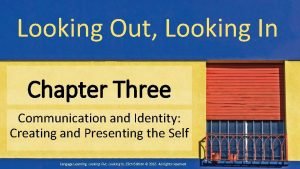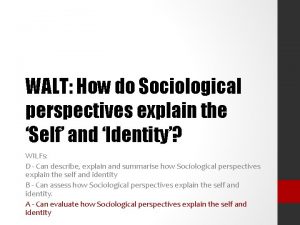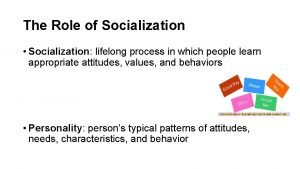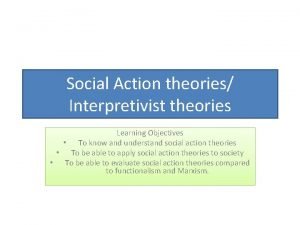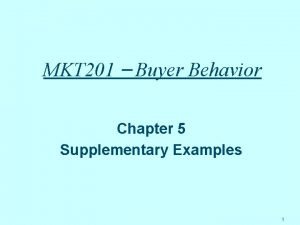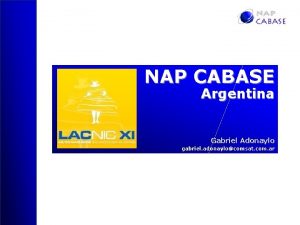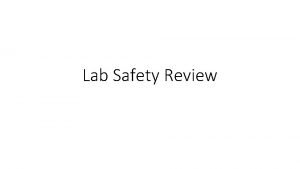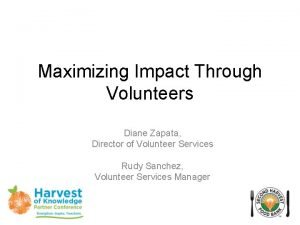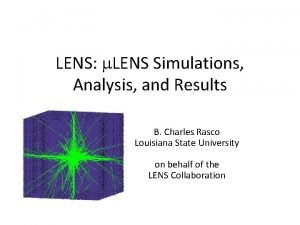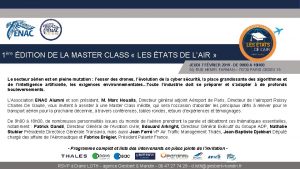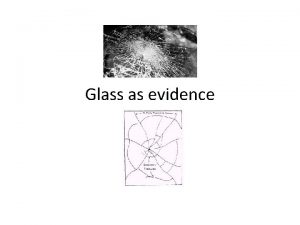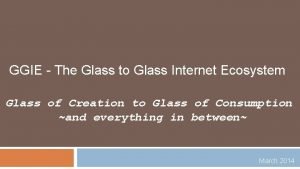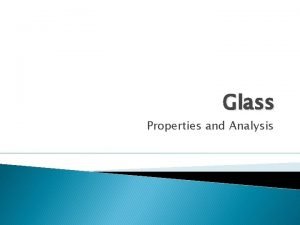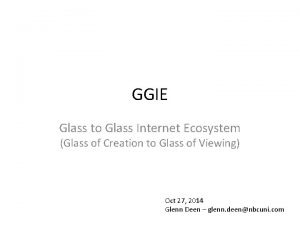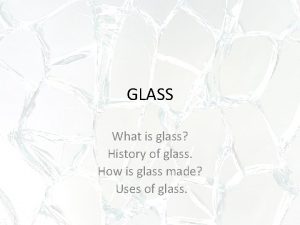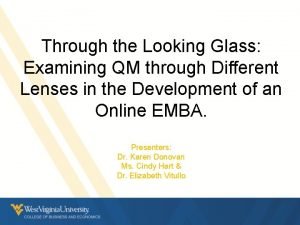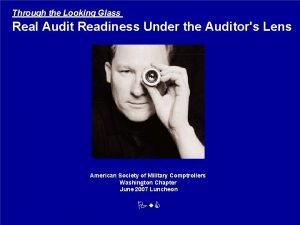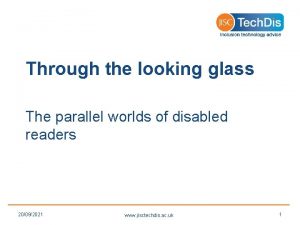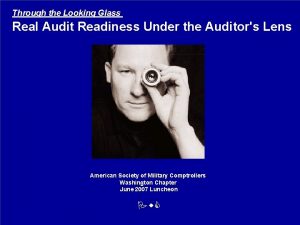Through the Looking Glass Teaching Online Dr Diane






























- Slides: 30

Through the Looking Glass: Teaching Online Dr. Diane Finley National Institute for the Teaching of Psychology St. Petersburg FL January 2019

Today’s Plan Issues to Cover (from poll) Quick tour of history of online education & basics of online education 7 Principles applied to Online Education Alice in Wonderland applied to Online Education Diane’s Principles and Tips Issues and Pitfalls

Issues to Cover (from the poll) Building class cohesiveness/using groups Motivating students/student engagement Making online interactive/meaningful discussion Using synchronous tools Course design Helping struggling students Latest technology

Online v. Face-to-Face Definitions • Face-to-Face (F 2 F) courses are given in a traditional setting, in the classroom. They may be supported by an LMS (learning management system) but students must come to class. • Blended/Hybrid courses are given partially online and partially F 2 F. The two components support one another. Percentage varies by institution, but substantial portion should be required online work. Otherwise it is simply web-enhanced. • Online courses are given fully online. Some institutions required on-campus exams but more recently most institutions give exams online

History of Online/Distance Learning § 1928 – ad placed in Boston Globe offering to teach shorthand at a distance § 1840 - shorthand taught via mail 1873 – Nasseh established (society to provide education for women § 1883 – Cornell attempted to establish a distance university – failed § 1892 – University of Chicago offers distance course § 1920 – advent of instructional radio 1953 – University of Houston offers televised courses § 1962 - Telstar launched – advent of telecourses § 1960 s – rudimentary computer-based instruction 1965 – phone-based courses were offered § 1981 – rudimentary whiteboard was developed 1990 s – development of internet changed education § 1994 – UMUC developed proprietary LMS and offered online courses 1995 – first commercial LMS § 2005 – You. Tube launched

Teaching F 2 F v. Teaching Online Familiar environment Nonverbal language clues Traditional student expectations More control for teacher Content provider Before term time demands More time during term required Student misconceptions about online Changing technology Loss of control

Why I Teach Online Challenge of new teaching environment is energizing (online is constantly changing as technology changes) Online allows us to extend education to those whose lives don’t let them attend traditional class hours. Their experiences enrich the classes. More participation from greater percentage of students Better participation from greater percentage of students Greater diversity of students Great lab for testing principles of psychology, specifically those of learning (reinforcement, shaping, etc). Students share responsibility for learning- restructuring of role of teacher (educare – to lead out) I can teach in my pjs!

Myths About Online Learning Technology makes everything easier Online is easy – I can just post my lecture notes Online takes less time Students are tech-savvy so I can focus on content Class dynamics will be different - no interaction I’ll never get to know my students I don’t need any special training

What Research Tells Us About Online Need learner focused course design v. instructor convenience Well designed discussions can foster cognitive engagement Online can challenge students’ current view of knowledge Instructor presence is critical Need ongoing training on how to use technologies Quality of online instruction is biggest factor in online learning Interaction is often key to satisfaction

Research Issues No firm controls No random assignment Operational definitions Little research on institutional factors

7 Principles of Good Practice in Undergraduate Education • • Encourage contact between students and faculty Develop reciprocity and cooperation among students Encourage active learning Give prompt feedback Emphasize time on task Communicate high expectations Respect diverse talents and ways of learning

Principle One Student-Faculty Contact is the most important factor in student motivation and involvement in the discipline and school Online courses promote interaction through easier access, discussions, space for interaction to occur, attenuation of perceived barriers. As an instructor, you must be present in the discussions and questions conferences. Quick response is critical

Principle Two Encourage Cooperation Learning is enhanced when there is a team effort and it is collaborative. Online courses facilitate student to student contact through a ready space for communication and the reduction of time and space obstacles. The instructor must create activities that require interaction with content, instructor and other students. Tools such as Google Docs or videoconferencing (Zoom is my current favorite) facilitate that cooperation. The instructor must require interaction

Principle Three Active Learning Active learning promotes thinking skills and touches on multiple learning strengths Online courses are tailored for active learning The instructor must create activities that require interaction with content, instructor and other students.

Principle Four Immediate Feedback Prompt feedback is essential The online environment enables the instructor to give almost immediate feedback. There is no need to wait for the next class. Most LMS (learning management systems) have gradebooks that enable the student to see grades without any FERPA worries

Principle Five Time on Task Emphasis on time-on-task is critical Online courses can make time on task more efficient. Online courses makes it easier for the instructor to track student time on task and to remediate when necessary. Online courses record all participation so students (and instructors) can see what they are doing.

Principle Six High Expectations Good practice communicates high expectations Online courses can more easily post expectations in terms of objectives, etc. Online courses make it easier for an instructor to highlight good work, thus giving other students examples of work that meets expectations. The same high expectations held for face-to-face students must be maintained for online students.

Principle Seven Respect Diverse Strengths Good practice respects diverse talents and ways of learning Different students have different learning preferences and talents. The online environment allows the instructor to tap into all of these. While online is primarily a text- based format, it is very easy to include media and out of class experiential assignment.

What Does Alice Say About Online Teaching 1. “But I don’t want to go among mad people, " Alice remarked. "Oh, you can’t help that, " said the Cat: "we’re all mad here. I’m mad. You’re mad. " "How do you know I’m mad? " said Alice. "You must be, " said the Cat, "or you wouldn’t have come here. ” (Cheshire Cat) 2. “Begin at the beginning, " the King said, very gravely, "and go on till you come to the end: then stop. ” (The King) “Would you tell me, please, which way I ought to go from here? " "That depends a good deal on where you want to get to. " "I don't much care where –" "Then it doesn't matter which way you go. ” “If you don't know where you are going any road can take you there” 3. "It's no use going back to yesterday, because I was a different person then. “ “I'm afraid I can't explain myself, sir. Because I am not myself, you see? ” “Know yourself”

More from Alice: Concepts related to Online Teaching: 4. “My dear, here we must run as fast as we can, just to stay in place. And if you wish to go anywhere you must run twice as fast as that. ” (Queen of Hearts) “It would be nice if something made sense for a change” 5. “Believe in the impossible. ” “Why I’ve believed as many as 6 impossible things before breakfast. ” 6. “ Say what you really mean” 7. “Do go down the rabbit hole” So the title seemed to work out!

Diane’s Principles of Good Practice in Online Teaching 1. Know Yourself and Your Strengths and Likes 2. Start with objectives 3. Maximize the advantages of the format 4. Keep it simple (especially at first) 5. Maintain rigor 6. Develop flexibility 7. Technology does not equal pedagogy 8. Model ethical behavior for students

My Tips Required interaction is critical Manage Your Time Create “stock” items Enlist on-campus services such as Library (embedded librarian) Take at least one day a week off Explore what is already out there Ask for reassigned time for course development

Issues to Consider Faculty Selection – voluntary? Time demands – administration expectations Equipment Needs (issues of mobile computing) Technology literacy requirements (both student and faculty) Universal design & issues of accessibility OER movement & issues of copyrights Legislative oversight

More Issues to Consider Student expectations and training Enrollment limits Intellectual property right/copyright issues (other legal issues) Technology support on campus (and while off campus) Student services for students Bandwidth needs – streaming, etc.

Before We Go - Pitfalls Informality can be a problem Online requires self-discipline by students Not the environment if you tend to be obsessive Technology support on campus (and while off campus) Student services for students (often are nonexistent)

Before We Go - Pitfalls Technology can still have issues; lack of student experience with basics Student misconceptions about rigor and time required Student expectations of 24/7 access Lack of nonverbal cues about when there is confusion (teaching “blind”) Student attrition

My Module Structures Prefer Topical Modules Getting Started Module Standard QM information; use in multiple classes Few tabs/buttons on navigation bar Announcements, Modules, Grades, Library, Zoom, Grades

Sample Module Structures Objectives, Thought Questions Readings Introductory “Lecturette” Media (Power. Point, Videos, Podcasts) Related Websites Discussion Quiz or assignments (if in the module)

My Sample Activities Sample Discussions: For this activity, you will examine your own exercise routine as it relates to exercise adherence. Describe your routine. Analyze your program using at least two theories from the chapter, discussing how it fits the research. How might you improve your adherence? Be specific about the factors that influence adherence and how you will specifically overcome those. Many people make New Year's resolutions as they celebrate the end of one year and the beginning of another year. Did you make any resolutions this year? Do you know anyone who made resolutions? Have you (or a friend) ever tried to keep a New Year’s resolution? Was it successful? Did your methods match any of the ways of achieving self-control as described in the chapter? For this discussion, make a resolution related to school and academics. Describe at least two methods from the chapter that will help you keep this resolution.

References/Resources Chickering, A. W. & Gamson, Z. F. (1987). Seven principles for good practice in undergraduate education. American Association for Higher Education Bulletin, 39(7), 3 -7. Retrieved from http: //www. aahea. org/bulletins/articles/sevenprinciples 1987. htm. Mc. Keachie, W. , & Vinicki, M. S. (2007) Teaching Tips: Strategies, Research and Theory for College and University Teachers, 12 th ed. Boston: Houghton-Mifflin Publishers. Means, B. ; Toyama, Y. ; Murphy, R. ; Bakia, M; & Jones, K. (Oct. 2010). Evaluation of evidence-based practices in online learning: A meta-analysis and review of online learning studies. Retrieved from: https: //www 2. ed. gov/rschstat/eval/tech/evidence-based-practices/finalreport. pdf Community College Research Center - https: //ccrc. tc. columbia. edu/Online-Education-Instructional. Technology. html Journal of Teaching and Learning with Technology - https: //cetl. kennesaw. edu/journals/journal-teachingand-learning-technology Online Learning Consortium - https: //onlinelearningconsortium. org/ Quality Matters - https: //www. qualitymatters. org/ University of Illinois Center for Online Learning - https: //www. uis. edu/colrs/researchresources/onlinestudies/
 Breadth of penetration
Breadth of penetration Looking out looking in chapter 9
Looking out looking in chapter 9 Sociological perspective of the self
Sociological perspective of the self Virginia woolf lady in the looking glass
Virginia woolf lady in the looking glass Process of socialization
Process of socialization Cooley's idea of the looking-glass self
Cooley's idea of the looking-glass self Looking glass self examples
Looking glass self examples Cabase looking glass
Cabase looking glass Looking glass threat map
Looking glass threat map What is the glass escalator
What is the glass escalator If acid is splashed on your skin, wash at once with *
If acid is splashed on your skin, wash at once with * Does hot glass look like cold glass
Does hot glass look like cold glass Bullet exit holes
Bullet exit holes Total internal reflection semicircular glass block
Total internal reflection semicircular glass block Reflection of light by spherical mirror
Reflection of light by spherical mirror Microteaching is a scaled down teaching
Microteaching is a scaled down teaching Alicia burdess
Alicia burdess 10 principles of effective online teaching
10 principles of effective online teaching Swinburne online teaching
Swinburne online teaching Themes of war poetry
Themes of war poetry Transactional dialogue example
Transactional dialogue example By one man sin
By one man sin Classes of furcation
Classes of furcation Tangential sawing advantages
Tangential sawing advantages Night of the scorpion poem by nissim ezekiel
Night of the scorpion poem by nissim ezekiel Robin laskowski
Robin laskowski Diane liu md
Diane liu md Diane markoff
Diane markoff Diane zapata
Diane zapata Diane markoff
Diane markoff Pilate master class
Pilate master class
